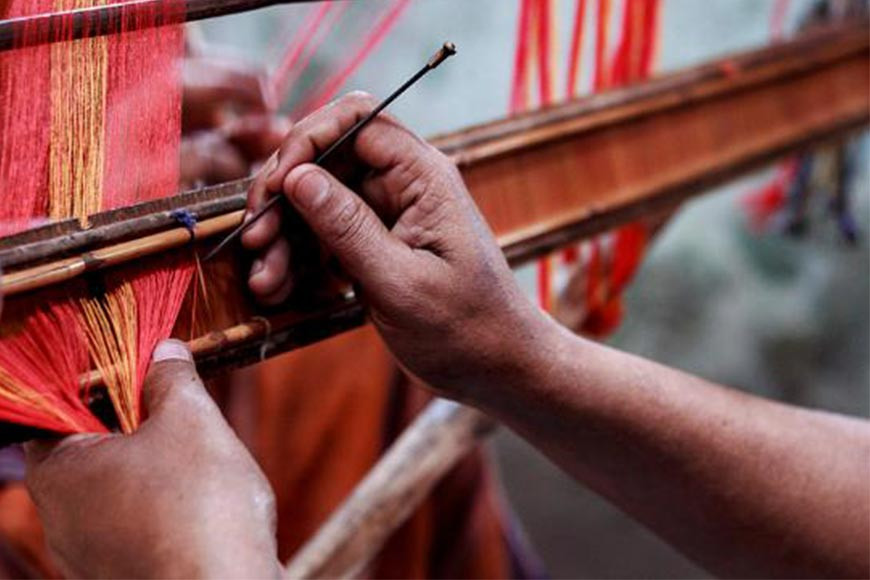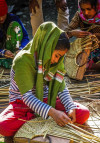When it comes to the richness of art and culture, West Bengal stands out to be one of the most unique and diverse states. The various foreign reigns have highly influenced the art and architecture of the state. However, Bengal prides itself on the imprint which it carries beyond the foreign influences, ancient and modern.
Jamdani
Owing to its origin in Dhaka, Bangladesh, Jamdani is popularly known as Dhakai Jamdani. The royal patronage of Mughal rulers helped to flourish the finest weaving techniques of Jamdani.
Throughout the fabric, floral motifs and geometric patterns are woven exquisitely with golden threads. One of the most expensive fabrics is the Muslin Jamdanis which were highly in demand during the Mughal period. However, over time, cheaper fabrics substituted Muslin, which in turn offer a contemporary look.
The age-old tradition of the weaving art of Jamdani was included in Unesco’s Representative List of Intangible Cultural Heritage of Humanity in 2017.
Taant
Among all other weaves of Bengal, Taant is one of the most widespread weaves. Besides the Murshidabad district of West Bengal, Nadia, and Hoogly, Taant is also woven in the neighbouring states and countries, such as Assam, and Dhaka, Narayanganj, Tangail of Bangladesh.
In the Hoogly district of Bengal, another pattern of cotton taant is observed which is known as Dhonekhali or Dhaniakhali taant.
The soft cotton fabric of Taant sarees makes them daily wear, especially in the summers. These fabrics can be found in every Bengali household mostly for their affordable range, easy maintenance, and broad beautiful borders.
Khesh
The female weavers of the Birbhum district of West Bengal are skilled in delicately carrying out the traditional technique of employing old and used saree fabrics to weave Khesh sarees. The process includes purchasing used cotton sarees, washing them, and finally tearing them in thin strips. These strips are then used to weave the new Khesh saree. A remarkable contrast is observed as the old fabric strips blend in the new woven fabric.
This weaving technique was popularized by Rabindranath Tagore when he set up a vocational training centre in Bolpur. Nowadays, the Shonajhuri market of Shantiniketan abounds in Khesh items. Besides sarees, Khesh bags, Kurtis, skirts, bed covers, cushion covers are widespread and popular among all.
Garad
Remarkably known as a traditional weave of Bengal, Garad or Gorod is woven in Mulberry or Tussar silk fabric. The entire saree is in white or off-white colour, whereas the border comes in red woven illustrating paisley motifs in zari.
The purity of these sarees is retained by preventing them from dyeing. Popularized by the royal families and the zamindars of Bengal, Garad sarees are worn by Bengali women during special occasions, such as Pujas, festivals, or holy ceremonies.
Baluchari
Baluchari weaves fall under the rich cultural heritage of Bengal. Since ancient times, Baluchari is the most exquisite silk saree of Bengal, originated in the Murshidabad district. The elaborate weaving methods, which flourished under the patronage of the Nawab of Burdwan and the delicately crafted grand designs set these sarees apart.
The brilliant craftsmanship can be observed in the intricate designs that illustrate stories from epics. However, Meenakari Baluchari and the Swarnachari sarees are among the two most popular patterns, famous for grand occasions, such as weddings. Temple influence, especially the terracotta temples of Bishnupur, makes the sarees unique in terms of upholding Bengal culture, heritage, and tradition.
Picture Source: Get Bangal



